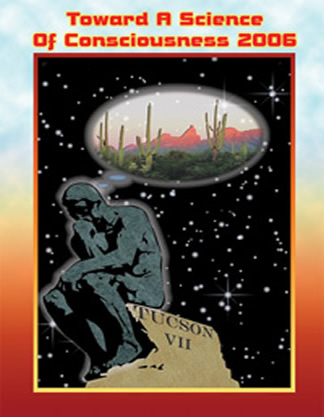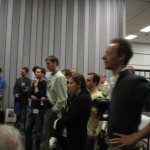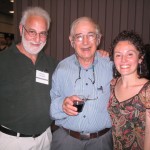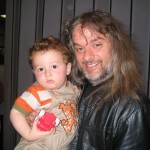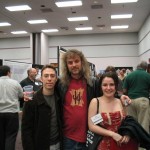The Court Gossip is a song cycle scored for two pop singers, string quartet, trombone, trumpet, flute, and piano. Selections from the work were first presented at the ArtSci festival in NYC in 2001.
The fascinating history of the work:
In composing my “rock opera for orchestra” View From the Strangers’ Gallery, I collaborated with some of my favorite writers and philosophers, becoming close with two of them, Nicholas Humphrey and Daniel Dennett. Dennett and Humphrey had worked together on a wonderful paper, “Speaking For Our Selves,” in 1989. This paper inspired many ideas important to cognitive science, including Dennett’s “Multiple Drafts Model” of consciousness; it explains how different parts of the brain assert more or less control at different times to work together on larger projects. Although our impulses, routines, and personality traits combine to give the appearance that we have a coherent self, what we call our “self” is more of a “center of narrative gravity” than an actual physical part of the brain to which we make representations.
I found this paper to be the perfect springboard to compare collaboration among parts of ourselves with collaboration between friends and co-writers. Despite their differing ideas and writing styles, Dennett and Humphrey had written a delightful paper together. And – just like our own desires and neural functions usually help but occasionally subvert other related processes – as friends, the three of us were all talking about each other in generally very helpful and warm, but occasionally gossipy, ways.
I thought: Wouldn’t it be just smashing to write a piece of music comparing how these writers collaborate and gossip with their own paper about how our own brains do the same thing internally? And wouldn’t it be brilliant to add another dimension to the conversation by imposing myself in this manner, even perhaps including an idea of the philosopher David Chalmers (whose ideas are quite opposed to theirs) about the problem of giving a “first-person perspective” report on mental states? It seemed the perfect hall of mirrors.
So I went to Turkey once again to write a piece of music about the inner workings of the mind. This time, unlike with View From The Strangers’ Gallery, I scaled back my production requirements so it would be easier to perform. In this piece, I applied the musical language of popular song to fugal composition, which would make it more accessible than my Finnegan’s Wake-ish debut. I was extremely pleased with the results, and I was excited to fly back to America to triumphantly present Dennett and Humphrey with the piece.
There was just one problem.
Their paper had used the idea of Multiple Personality Disorder (MPD; now called Dissociative Identity Disorder, or DID) to buttress their argument. And while the pieces’ composition was well under way, I discovered that MPD/DID largely had been discredited in the years since. Some of the most celebrated case studies of MPD later had been proven to be “iatrogenic” – “illnesses” caused or invented by the doctor or treatment itself. And the last thing Dennett and Humphrey wanted to do was to promote a musical work celebrating a paper which had referred in any way to MPD.
And so: I was left on my to promote it. It got accepted to the ArtSci festival in NYC, where we performed two of the work’s five sections, and it was warmly received. (One of my favorite writers, David Rosenthal, was there with his class and said to his students, “Now that, boys, is how it’s done!”) But that was it. And, after the conference, the work got filed with a K. Number and went on my shelf.
Musical techniques:
Like in my View From the Strangers’ Gallery, I used polyphony in new ways to illustrate the multi-layered complexity of the brain’s processing systems and recursive structures. The musical lines were shaped to illustrate Dennett’s “Cerebral Celebrity” amplification of his “Multiple Drafts Model” of consciousness, by altering which voices would “win out” in fugal competition to leave an effect on the musical development of the rest of the piece.
I also used some radical pointillistic orchestral techniques to convey the simultaneous and veiled competitions of parallel processing in conscious experience, and to make a brash analogy to the competitions of ideas, writing style, and fame which these two famous philosophers have with each other.

